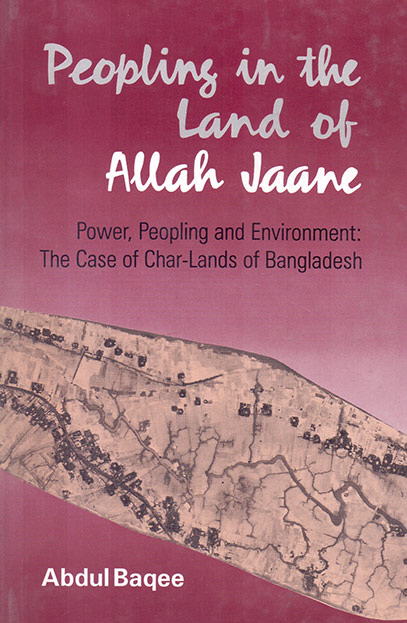
- Shop
- Peopling in the Land of Allah Jaane: Power, Peopling and Environment: The Case of Char-lands of Bangladesh
Peopling in the Land of Allah Jaane: Power, Peopling and Environment: The Case of Char-lands of Bangladesh
https://uplbooks.com/shop/9789840514182-peopling-in-the-land-of-allah-jaane-power-peopling-and-environment-the-case-of-char-lands-of-bangladesh-6453 https://uplbooks.com/web/image/product.template/6453/image_1920?unique=337f592
| Language: English |
Tags :
Book Info
This book illustrates the uncertainties of the lives of the inhabitants of char lands (reclaimed land) in Bangladesh. Flooding and riverbank erosion are endemic features in the areas close to the major rivers in Bangladesh. The rivers also throw up fertile lands that cause violent clashes between competing camps. Such violence has been examined against the backdrop and compulsions of cropping phenophases. With the help of several case studies, the book describes the survival strategies of the char lands. The author examines how the power elites take advantage of the peasants to secure their own safety and interests and also to maintain their position at the apex of the power structure. This has turned the people of the char lands into fatalists: they believe that all their intense sufferings are divinely ordained. In their loss of hearth and home, they inevitably see the unseen hand of ‘Allah’. Their attitudes bespeak passivity towards the misfortunes that befall them. Blind, unquestioned acceptance of fate pervades the char land ethos. This profound reality actuated the author to coin the expression, ‘the land of Allah Jaane’ in focusing the uncertainties of life in the char lands of Bangladesh. Integrated into the theme of the book is a portrayal of the world of the landless char women who survive under conditions of excruciating hardship by falling back on their ingenuity and in their efforts to keep the family together. The work concerns itself with a new and until now unexplored area on the fringes of rural society and sheds light on char land dynamics even as it unfolds the woes and sufferings of the denizens of distant char villages. Researchers and development workers will find it an invaluable vade mecum and policy planners at the national level should also find food for thought in the pages of the book.

Abdul Baqee
Abdul Baqee has been a faculty member in the Department of Geography and Environment at the University of Dhaka for the last 20 years. He has carried out research on the different dimensions of rural life in Bangladesh and has published more than forty papers in leading journals at home and abroad. He is also the author of a book on rural settlements. His research pursuits have taken him to the remote areas of Bangladesh and helped him delve deep into the lives and livelihoods of rural folk, especially of those who live in frontier settlements such as the chars and coastal regions.


